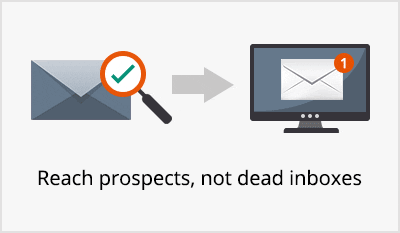Post-purchase emails are the emails you send to customers after they’ve bought something from you. These emails represent a tremendous opportunity for marketers to build a strong relationship with customers.
Before we go into the types of post-purchase emails, here’s a quick recap of why setting up post-purchase emails is important:
- They are invaluable in building a long-term relationship with customers.
- These emails improve your odds of repeat business.
- You can earn customer testimonials that can win you new customers.
- They make cross-selling a lot easier.
- They can considerably reduce post purchase dissonance.
- These emails can be used to get referrals.
- Remember, follow up emails are often the difference between a one-time buyer and a life-long customer.
Types of post-purchase emails
Now that we’re sure of the huge benefits, let’s look at the 15 types of post-purchase emails you can send to achieve the above and a lot more:
1. Thank you emails
A thank you email tells your customers you’re grateful they chose you. Remember, they could’ve bought from any of your seventy-three competitors instead. So take time thanking them.
What to include: Firstly, thank your customers. Congratulate them on making a great choice. Tell them you hope they enjoy using the product. Maybe include the top feature in brief.
Finally, tell them you look forward to serving them again.
If they’re a first-time customer, it’s a good idea to throw in a discount code (“Use HK73T to get a flat 15% off on your next purchase”).
When to send: Set the email trigger so that it is sent as soon as your customer completes the payment.
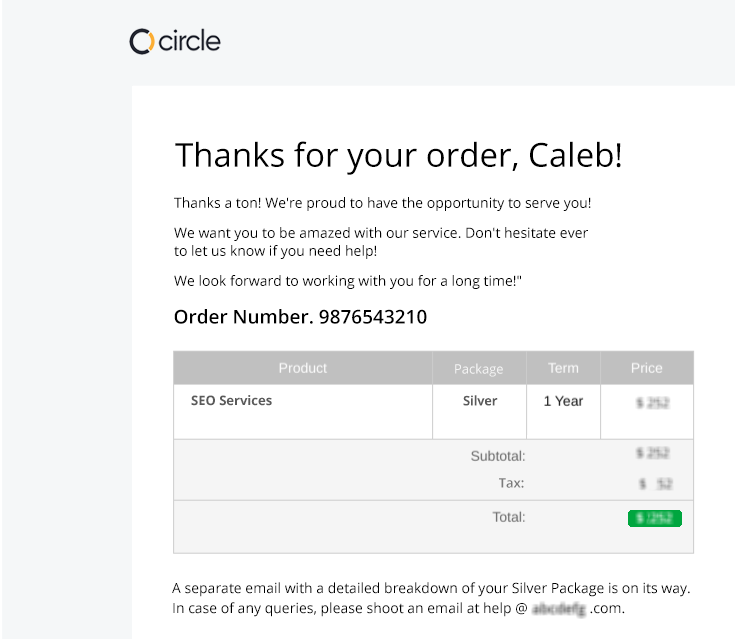
2. Order confirmation email
As the name suggests, such post-purchase emails simply confirms the order. But that doesn’t mean you’ve to make it boring. Make your customer feel thrilled!
What to include: The must-haves include name and delivery address of the customer as well as product details. Some e-commerce businesses don’t include the name of the product – they just use the product code.
While the original objective of the email is to acknowledge and confirm the order, you can use it to set the tone of your future emails: funny, serious, thoughtful, charming, witty, irreverent…. This email will tell your customers about the style you’ll use in all your future emails.
Remember that this is a transactional email and some countries may restrict what amount of marketing message you can include in this email.
When to send: It should be sent off the moment the order is confirmed.
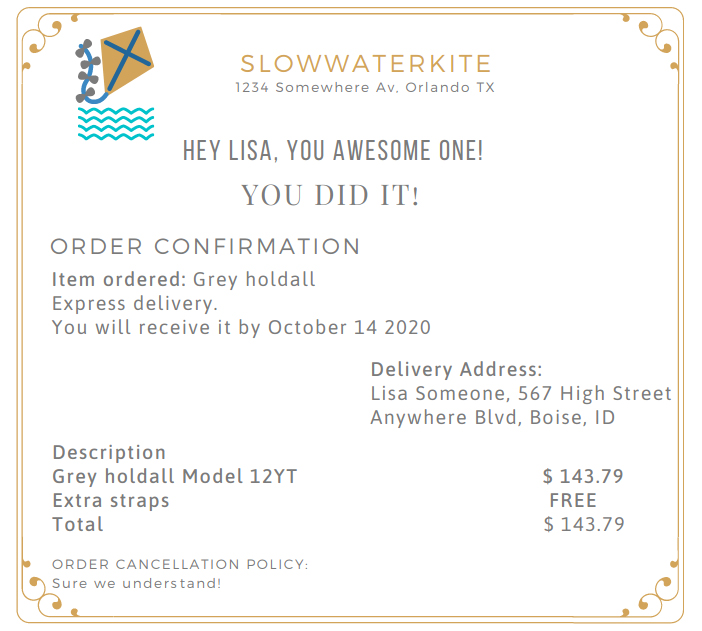
3. Shipping confirmation email
The buyer could begin getting restless anytime after they make the payment: when will the item they ordered arrive?
So the moment you ship the item, it’s time to get in touch with your customer.
What to include: First, make sure the style of your message matches the tone you’ve set. Include the product info, number of items, delivery address and likely delivery date. It’s always a good idea to include a tracking code of the shipment, so your buyer doesn’t have to be at your mercy to find out where’s the package on the route, at any point in time.
When to send: Tie this up with shopping. The moment you have shipped the item, shoot this email.
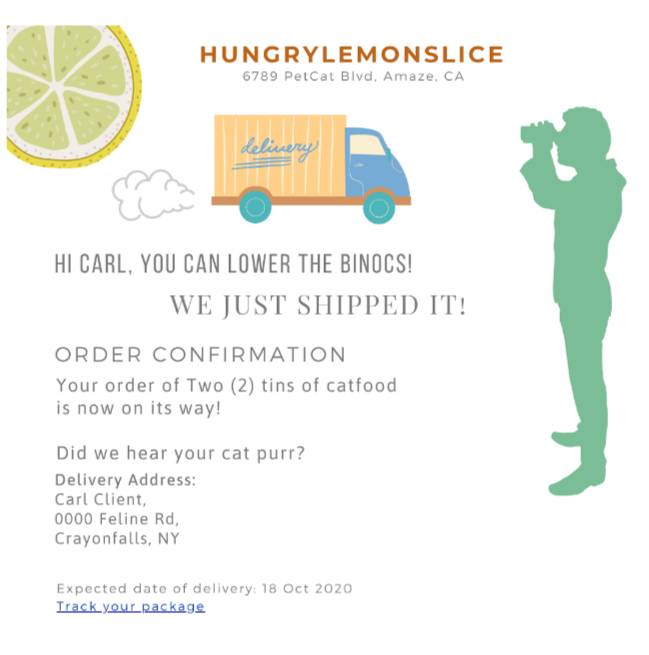
4. Delivery confirmation email
In the age of ecommerce, buying is a 360-degree experience for the customer. This includes everything from your store layout, your pricing, your returns policy, your prompt shipping … everything.
Prompt and safe logistics is an extremely crucial link in your entire marketing chain. So naturally you want to make sure your customers received their order the right way.
What to include: This post-purchase email has exactly one purpose to serve: confirm that the delivery was made.
Ask if they are happy with the way the product is delivered and whether they are satisfied with the packaging and stuff.
When to send: You’re going to track your shipping package delivery through your online system, so the email should be sent within minutes of the package being actually delivered.
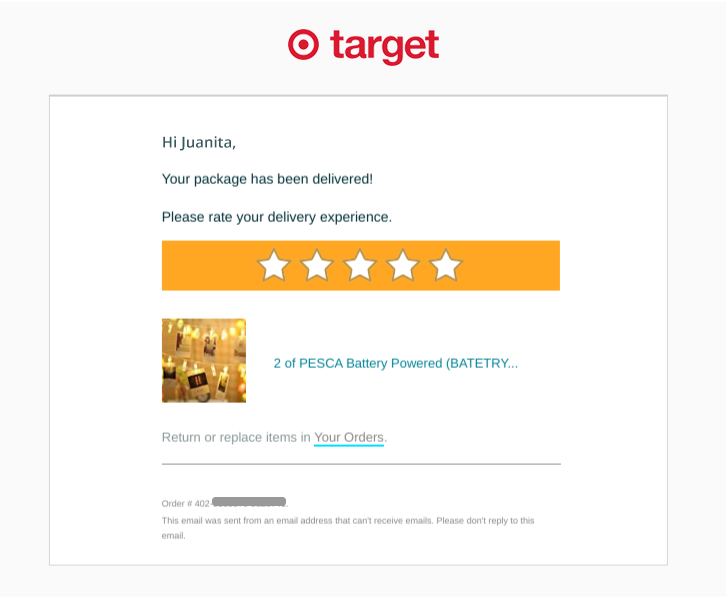
Notice how the above email asks a simple rating question on the delivery experience.
5. Product review request
Today, it’s unlikely that people will buy anything online without reading the reviews first. So it’s important that you collect reviews from your customer to establish what is called social proof.
Asking for feedback is a great way of improving your product, pricing, service and everything else that matters.
There’s one hidden benefit with post-purchase emails that request product review.
When your customers click on the link inside the email (or reply to your email), it counts as engagement. The email ecosystem notices this and uses this as a positive cue for your reputation. Good for your email marketing best practices!
What to include: If the customer has bought multiple products, use one email for each product separately to avoid confusion.
Use a mix of star-rating and descriptive reviews. The star rating lets you tabulate and rank products easily, while the descriptive reviews provide a further, in-depth understanding of the product.
When to send: How many days after the product delivery should you send the product review email? This depends on various factors like whether it is a simple, ready-to-use product or does it require considerable time in installation, whether it was bought ahead of the time to use (e.g. a winter-cream bought in mid-September) and so on.
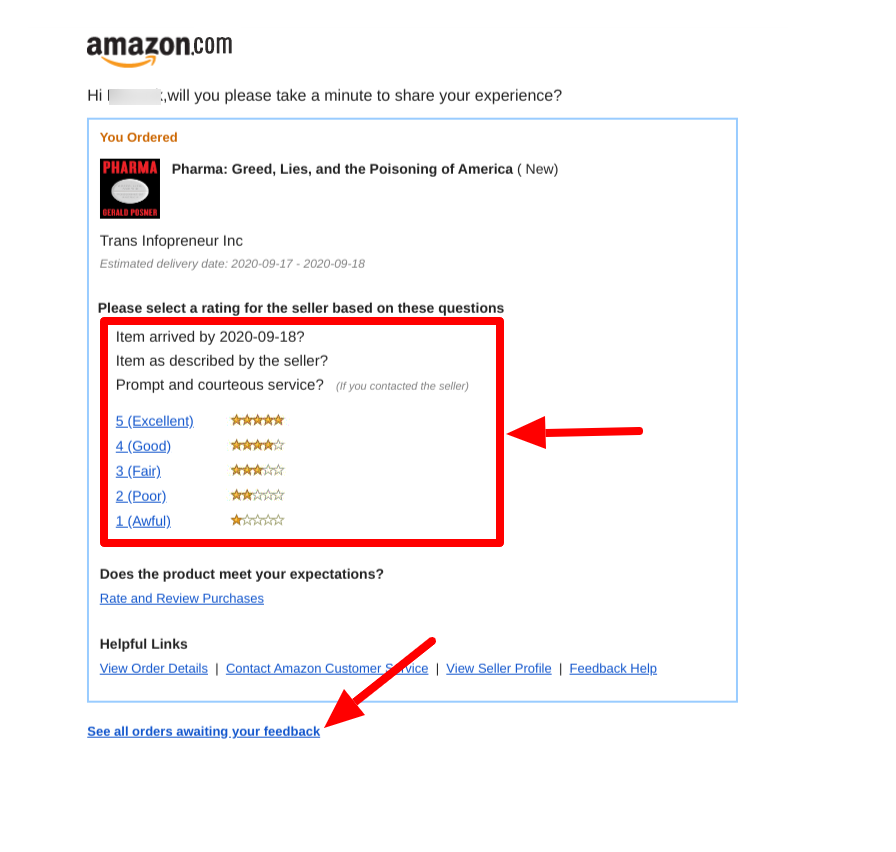
Email 1: Asking for feedback. The above email from Amazon is a great reference for at least two reasons.
One, it tells the user that they will have to answer only three questions (‘We don’t waste your time!’). Two, it has a link for earlier orders that the user hasn’t rated yet.
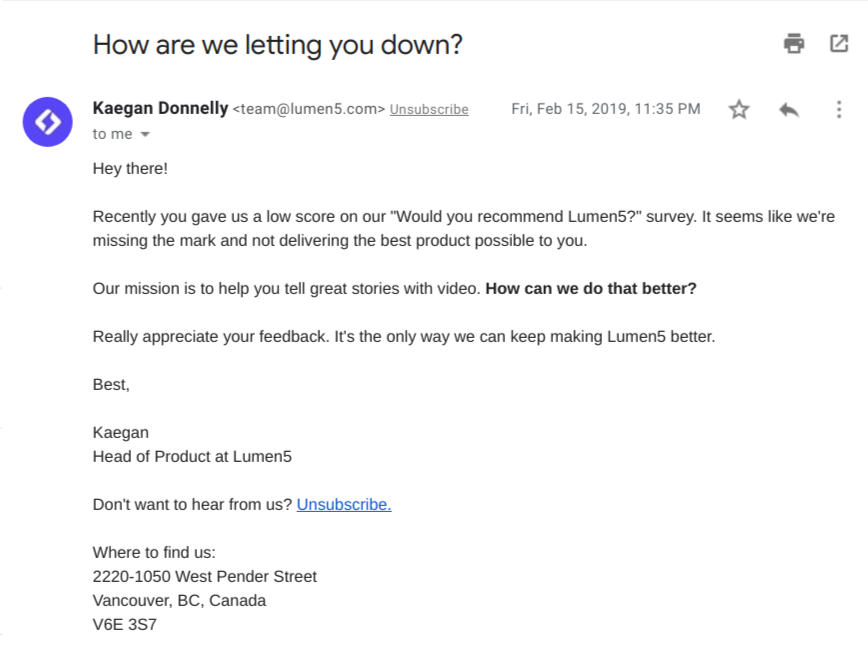
Email 2: After the feedback: This email from Lumen5 was sent after the user gave a low score to their service.
There’s one thing that catches your attention: the email is sent by the Head of Product. Feels good when the Head of Product invites further feedback (question in bold).
6. Share article about cross-sold products
Surely you have additional products that solve some problems your customers face. For instance, you might have external memory cards that will solve the problem of limited memory of a digital camera your customer bought.
First, create content in the form of blogs or videos that explain why it makes sense to have memory cards for cameras. Next, share these articles with your customers.
That way, they realize that you are interested in solving their problems and not just pushing your products.
What to include: It’s important to keep such emails very short and to the point.
Share the link to the blog or video. In a line or maybe a couple of bullet points, explain why you think it’s relevant for the customer.
When to send: Send it about a week before you start sending the cross-sell emails.

7. Cross-sell email
Cross-selling is about customer-retention more than anything else, so be sure you suggest the right things that make your customer’s life easier.
What to include: Mention what the customer bought from you earlier. Show how the product you’re now proposing will help them better enjoy the earlier product.
Whenever possible, include customer testimonials or some social proof in the format of a story. And don’t forget to use images.
When to send: While you can send it any time, it works even better when some items are back in stock.
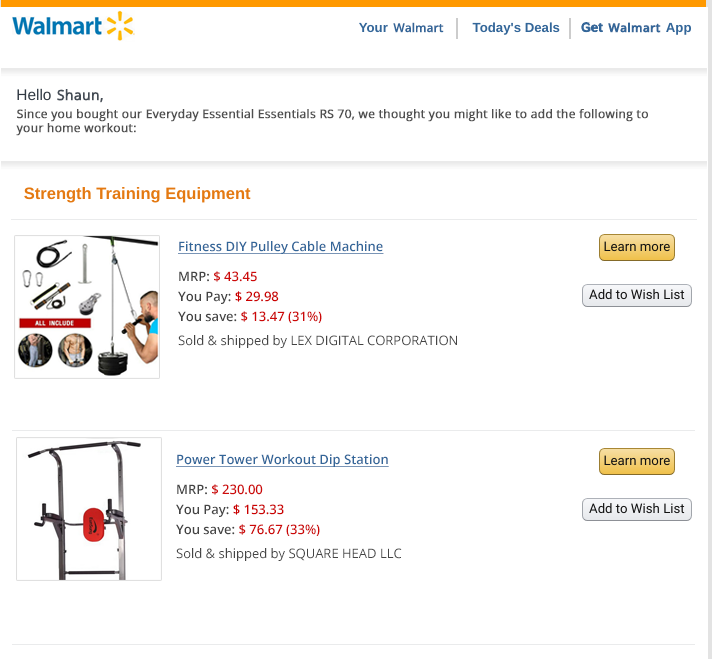
8. Replenishment emails
Anything that your customer needs to use on a daily or a regular basis needs to be bought again. Toothpaste, diapers for kids, deodorants, hand-sanitisers… the list can be huge.
You don’t want your customers to run out of these products and then make an emergency purchase from a competitor. That’s why you want to send them replenishment emails, reminding them it’s time to refill by making a purchase.
What to include: Just remind them they need to replenish the item. Provide a simple button on which to click and order.
Being playful helps, unless the product is related to health issues.
When to send: The timing of replenishment post-purchase emails will depend upon what the product is and how quickly it will get used up.
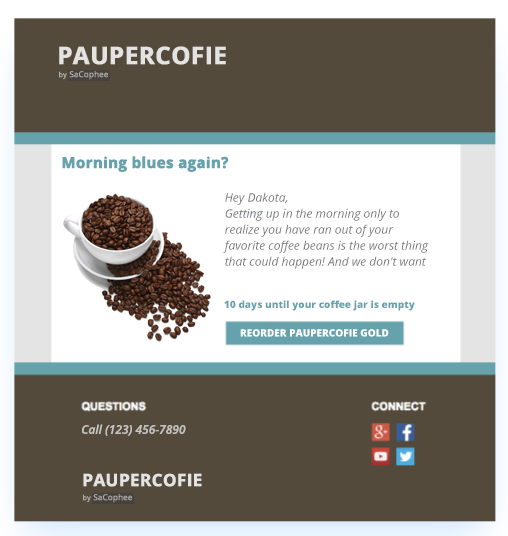
9. Repeat purchase emails
Repeat purchases are only slightly different from replenishment purchases. If an item is consumed regularly, say, a shaving cream, you can predict with a good deal of accuracy when the buyer will run out of it.
On the other hand, items like socks or office supplies are bought repeatedly but it’s not easy to predict how soon they’ll be used up.
What to include: As in the emails of your post-purchase sequence, thank your customers for having bought from you earlier and mention that they might need to purchase the items again.
Many of these items don’t have a pressing need to be bought, so you might need to enclose some discount or offer to persuade the customer to buy it.
When to send: You don’t want your customers to forget you completely on this product. You can send repeat purchase emails a month or more after the first purchase.
10. Product recommendation emails
Product recommendations are sent when you think there are products that might interest your customer.
What to include: Remember that the customer hasn’t asked for this email, you’re urging them to buy. That’s why it’s important to give some reason to make a purchase. It could be a discount, a combo-offer, a limited-edition product, extra reward points… anything that moves the needle.
Be sure to include images, especially for gifting items. That will help customers mentally connect the gift with the person it is meant for.
When to send: Send these emails especially when a festival or an event is approaching. Besides that, you can send them whenever you’ve added some new products. Just make sure you don’t send too many emails or your customers might get a little annoyed!
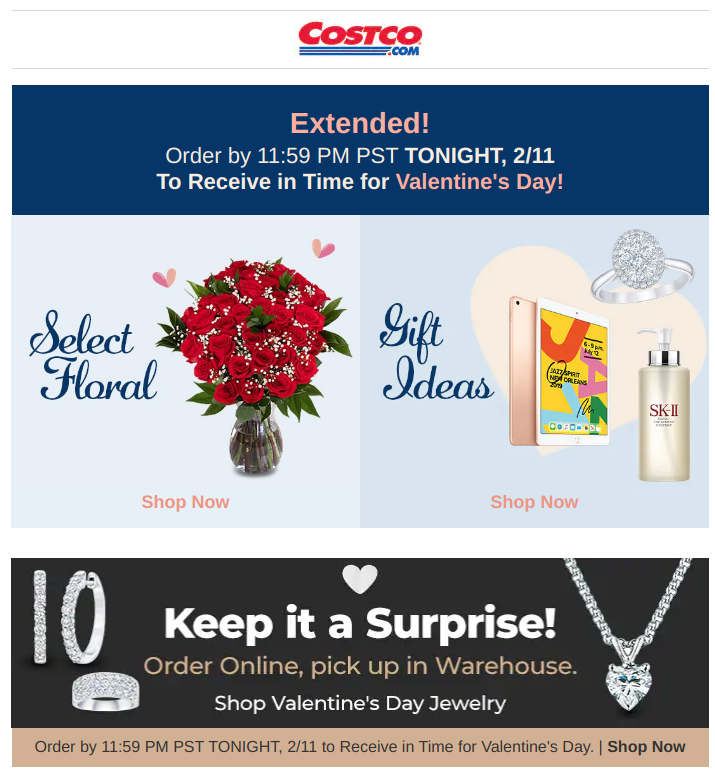
This email above, one of the many post-purchase messages from Costco, seeks to make the customer’s life easier. The buyer can order online till just 3 days before Valentine’s day and collect it from the warehouse. An interesting case of online-offline combo.
Just in case the customer has forgotten to buy a Valentine’s Day gift in advance, this email is super-helpful.
11. Sales notification emails
When you announce a sale, you want to let your customers be among the first to know.
Why?
One, because a customer who has bought from you is likely to buy from you again because they’ve begun to trust you. Two, it costs about five times to get a new customer as it does to retain an existing one (Source).
So go ahead, use post-purchase emails to make your customers feel special by letting them know of all relevant sales.
What to include: Keeping the email short is a good idea. That way, your customer will not miss the important part of the message.
Always make a point to highlight the last dates of the offer. Or simply say, “Till stocks last!”.
If it’s a special offer exclusive to existing customers, make sure you highlight it.
When to send: Give time to your customers to make up their mind. However, don’t forget sales emails also need follow ups.
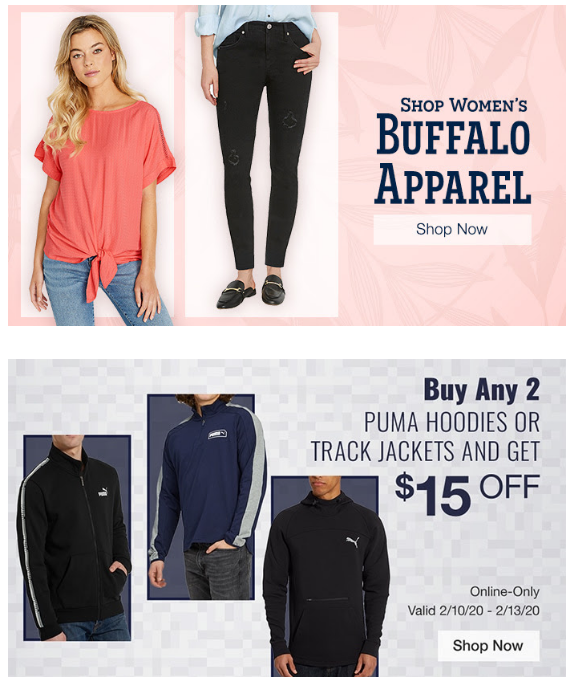
This is an example of one that tells customers of the sale available.
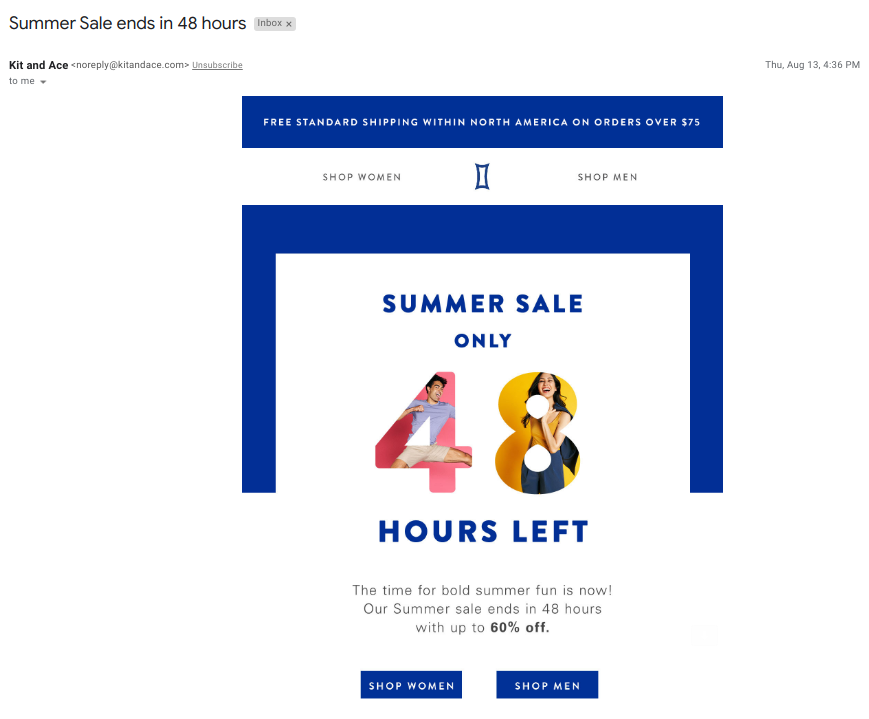
This is a follow-up email.
Notice how it uses the urgency factor (“48 hours left”). Though it has little copy and only basic images, it turns out quite well.
12. Referral program emails
One of the easiest sources of getting new customers is your existing customers – something you can achieve with well-crafted post-purchase emails.
Your existing customers will know of many people whose requirements and profile match their own. That means they are your potential customers. And the best way to reach them is through you existing customers.
What to include: Ask your existing customers whether they’d like to recommend your products to their friends and contacts. Keep the process simple and short.
Importantly, answer the question “What’s in it for me?”. Show your customers how they can gain by referring other customers.
When to send: While there’s no particular time to send such emails, you’ll want to first reach out to customers who’ve been with you for at least a few weeks and have rated your products favorably.

13. Conduct customer surveys
A customer survey is different from product feedback. While a product feedback asks for review for a particular product, a survey is more generalized.
What to include: Be sure of at least two things. One, make the responding customer feel important. After all, they’re doing you a favor by spending their time and filling up the survey, right?
Two, keep the survey short and tell the customer it’s not going to take a lot time.
When to send: You don’t send out survey emails as often as other emails.
One good practice is to send out surveys once a year, with 25% of your customers being surveyed every quarter. That way, you won’t be surveying your customers too often and yet you’ll keep receiving feedback.
What are the risks of incentivizing customers to participate in a survey?
There are at least two risks when you offer incentives to customers to participate in a survey.
First, you may get responses from customers who wanted the incentives, and they may look nothing like your customer persona. That can do more harm than good.
Second, when there’s an incentive, people are more likely to submit positive feedback. This again hurts the purpose of your survey.
When is it okay to incentivize customers to participate in a survey?
SurveyMonkey points out that offering incentives might be a good idea when you’re trying to make the “rare population” speak up. These are people who are typically non-responders and getting any information about them from any other route is difficult.
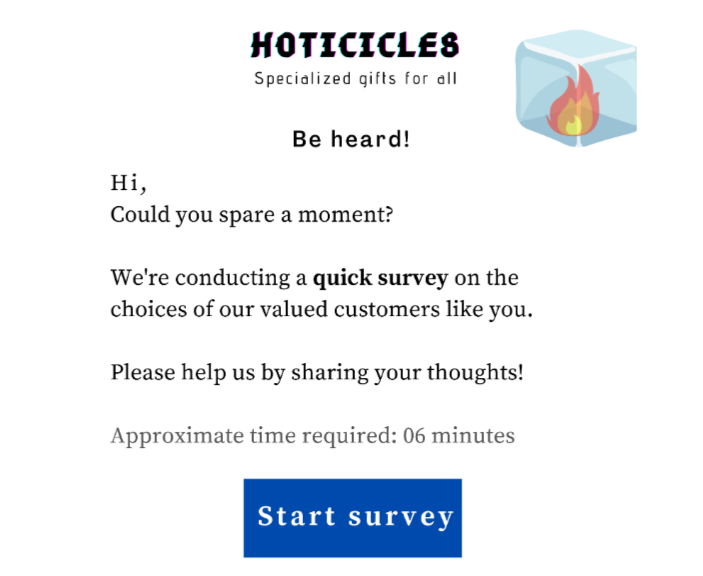
14. Milestone emails
A milestone is a special day in the journey of your customer: your customer’s birthday, their wedding anniversary, their day of graduation…
Interestingly, you can also use the date of their first purchase as an anniversary. After all, that purchase is extremely important too!
What to include: Explain what the milestone is about.
Next, offer something of value. It could be an offer for free shipping, some discount, extended warranty… anything that is perceived valuable will work.
Make sure the email is full of love and shows how thrilled you are with the event. As a part of the post-purchase experience, milestone emails can further cement the relationship you have with your customer.
When to send: It’s a good idea not to overuse it by having too many anniversaries every year. You could decide on one or two milestones that you’ll celebrate every year with the customer.
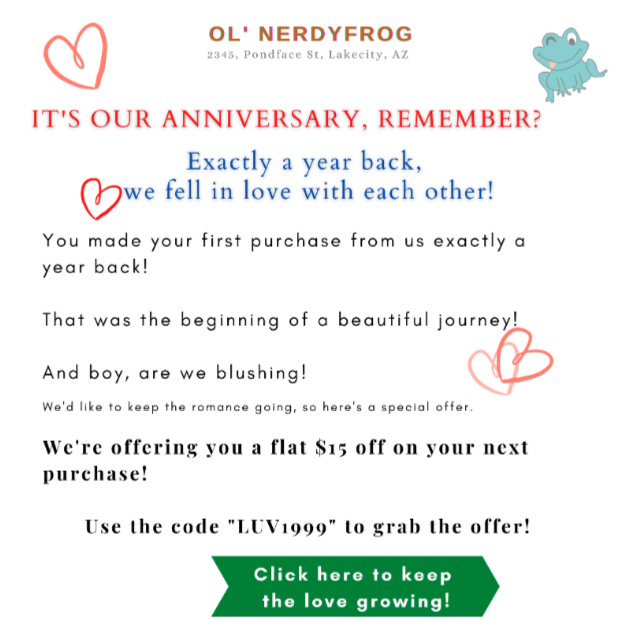
The above is a hypothetical illustration of how you could use the idea of anniversary to get in touch with your customers.
15. Win back emails
No matter how hard you try, you’ll always have some customers leave you.
Should emails to them be a part of your post-purchase email flow?
Absolutely.
Unless you make concerted efforts to win them back, they’re unlikely to return.
Which is why win-back emails are important. It’s easier to persuade an ex-customer to buy from you again than to persuade a complete stranger to do so.
What to include: Craft the message carefully. Your email should clearly show how you regret their absence on your platform.
Customers who have left you will almost always need a good reason to come back, and a good discount or a special offer is one of the best things to do.
When to send: The definition of what constitutes a lost customer isn’t always clear for most e-commerce businesses.
However, most lists of ecommerce email marketing tips will tell you that anyone who hasn’t bought from you in the past three months has effectively left you. That means you could send them the win back emails.
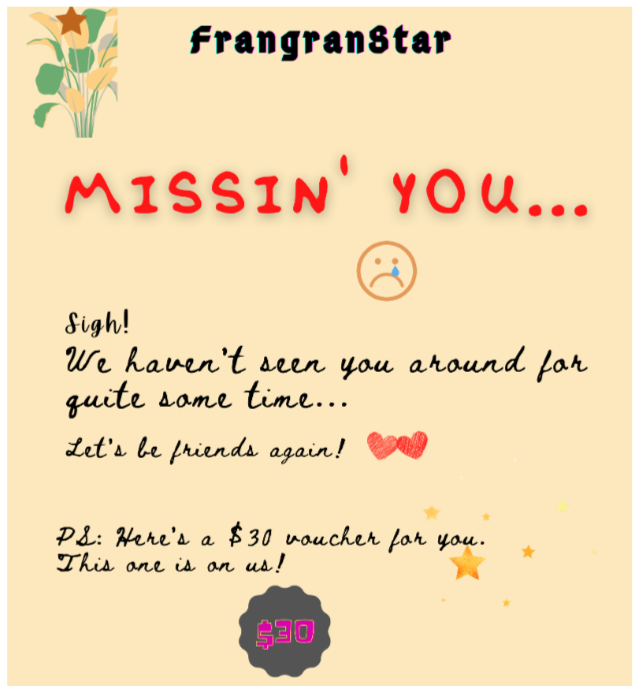
Summing up
By now you’ve realized that the post-purchase email sequence doesn’t just end with a delivery confirmation email – there’s a lot of hidden value that you can unlock.
Carefully thought-out post-purchase email campaigns can do wonders for your revenue while controlling marketing expenses.
The engagement you can build with these emails can not only bring you low-cost repeat purchases and strengthen customer loyalty but also improve your brand recall value and keep you ahead of competition.
One last thing: Make sure your customers’ email addresses are correct or you won’t reach them. You can easily verify email addresses using our powerful email verification platform! Sign up for free and get 100 credits free daily!

